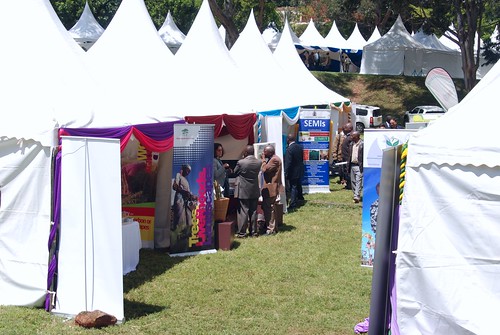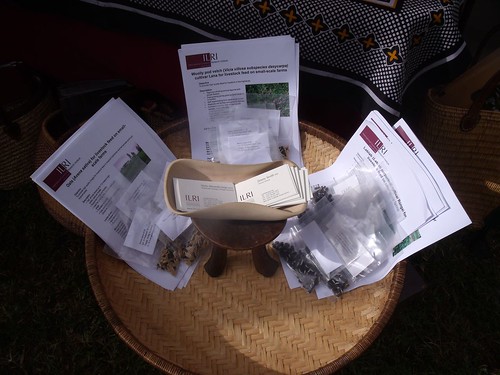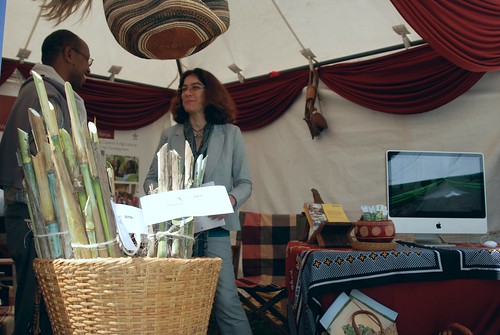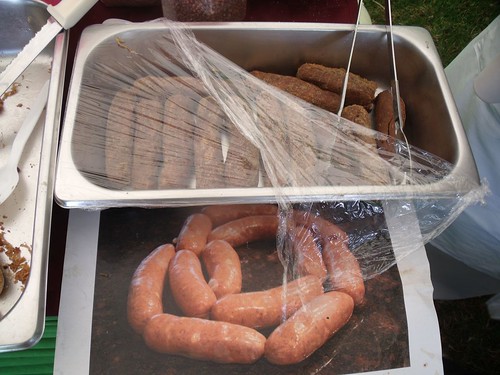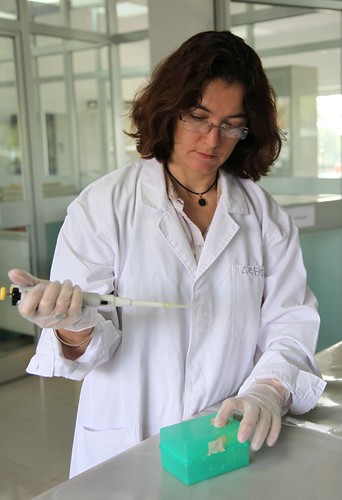
The Tuft of Grass Minor, watercolour by Albrecht Dürer (1471–1521) (image via Wikipaintings).
An impact case study on Getting superior Napier grass to dairy farmers in East Africa was published on 1 Mar 2013 by the European Initiative for Agricultural Research for Development (EIARD), the International Livestock Research Institute (ILRI) and the Kenya Agricultural Research institute (KARI). Excerpts follow.
To meet demand for high-yielding, disease resistant fodder from smallholder dairy farmers in East Africa, scientists from the Kenya Agricultural Research Institute (KARI) and the International Livestock Research Institute (ILRI) worked together to select and distribute smut-resistant varieties of Napier grass.
‘Napier grass has become the most important fodder crop in Kenya, but 20 years ago head smut disease began to have a devastating impact, turning valuable fodder into thin, shrivelled stems. With the cost of disease control using systemic fungicide beyond the means of most smallholder dairy farmers, KARI began work to select smut-resistant varieties.
‘With access to Napier grass germplasm from ILRI’s genebank, KARI developed two resistant varieties — Kakamega I and Kakamega II. Favourable laboratory results were confirmed in farmer’s fields and work began to multiply planting material. Within a year, cuttings were distributed to over 10,000 smallholder farmers. The new varieties are not quite as productive as the best of Kenya’s local Napier grass varieties, but have still proven popular in smut-affected areas. By 2007, 13 per cent of farmers were using Kakamega I for zero grazing systems in smut prone areas.
‘The chance of head smut resistance breaking down in the new varieties is high, so KARI is screening more materials from ILRI, which is continuing to build its Napier grass collection to have germplasm available to screen for new resistant varieties. In 2012, ILRI provided the Brazilian Agricultural Research Corporation, Embrapa, with Kakamega I and II to enable researchers to use them to develop higher yielding and more nutritious resistant varieties. . . .
Background
‘Dairy farming, Kenya’s leading livestock sector activity, is vital for the livelihoods and food security of millions of Kenyans. More than 80 per cent of milk produced and sold in Kenya comes from smallholder farmers, typically raising just one or two dairy cows on small plots of land. Women perform half of all dairy related activities in Kenya, which improves household welfare, primarily through increased household income and milk consumption.
‘With a growing population and shrinking areas for pasture, cattle are increasingly being fed on crop residues, cultivated fodder and some concentrates. Ninety per cent of farmers now produce on-farm feeds. Being able to provide enough good quality fodder is by far the most important factor in achieving high milk quality and yield, with a well fed animal producing two or three times more milk than an averagely fed one.
‘The high yielding fodder, Napier grass — Pennisetum purpureum — has become by far the most important due to its wide adaptation to different regions, high yield and ease of propagation and management. Napier grass constitutes between 40–80 per cent of the forage for more than 0.6 million smallholder dairy farms. With fodder in high demand, selling Napier grass as a business has good potential for improving smallholder livelihoods. According to a recent survey, up to 58 per cent of Kenyan smallholder farmers already sell fodder, including crop residues, straw or grass.
‘However, in the early 1990s, head smut disease, caused by the fungus Ustilago kamerunensis, began to have a devastating impact on Napier grass. Spread rapidly by wind and infected plant material, smut turned valuable Napier grass into thin, shrivelled stems and reduced yields by 25–46 per cent. For smallholder farmers, the threat was very serious.
‘Disease control using systemic fungicide in fodder crops is very expensive and therefore beyond the means of most smallholders. Using tolerant high yielding varieties is a cost effective solution and avoids the additional costs of moving to a different feeding system. ILRI maintains an international collection of forage germplasm under the auspices of the International Treaty on Plant Genetic Resources for Food and Agriculture. The state of the art genebank, based in Ethiopia, holds over 19,000 forage accessions, including 60 genotypes of Napier grass. . . .’
Funding
ILRI received direct funding from the European Union, Germany, Switzerland and the United Kingdom to support their forage diversity work and forage genebank in addition to funding from CGIAR.
For further information
Getting superior Napier grass to dairy farmers in East Africa, impacts case study by EIARD, ILRI and KARI, Mar 2013
Visit ILRI’s forage diversity website
Visit the project site: Napier Grass Stunt and Smut Project
Saving animal feed plants to preserve livelihoods, 2007 (ILRI film, run-time: 11 minutes)
Putting ILRI’s genebank to work, 2007 (ILRI film: run-time: 14 minutes)
Contact: Alexandra Jorge, ILRI Genebank Manager: a.jorge [at] cgiar.org

